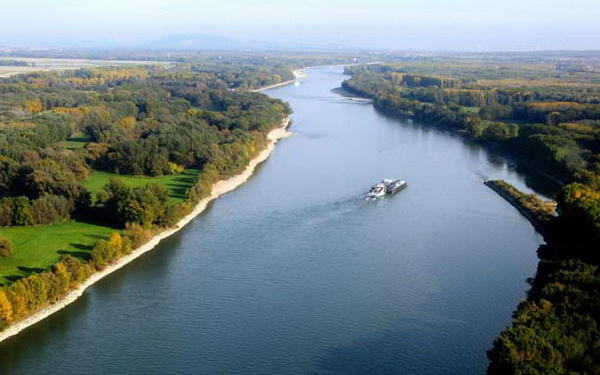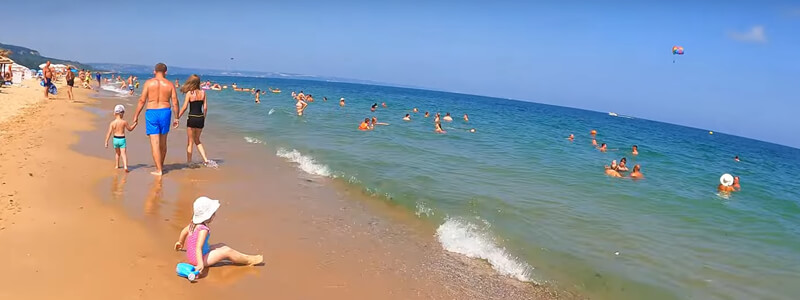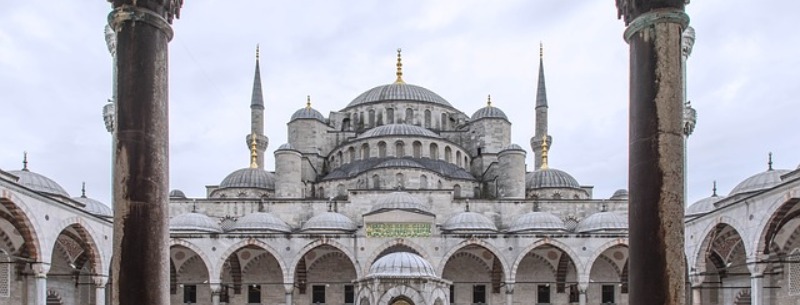2024 Bulgaria Visitors Guide
In many ways, Bulgaria remains the unknown country of the Balkans. Less newsworthy than the former Yugoslavia, and less heavily touristed than neighboring Greece and Turkey, it’s a place that brings few distinct images to mind. Despite being the site of extensive Black Sea package resorts and the source of several good wines, it’s all too often dismissed as the dour place it was before 1989 when it served as one of the Soviet Union’s most loyal East European allies. As with many little-known destinations, however, there’s a great deal to discover here: much of Bulgaria is like an open-air museum of Balkan culture, with beautifully decorated churches, fine mosques, wonderfully preserved rustic villages, and a great deal of enduring folklore. The mountainous interior makes it one of the top hiking destinations of Europe, while over on the Black Sea coast, the white-sand beaches are just as magnificent in reality as they look in the tourist brochures.
Bulgarians are frustrated by their country’s lack of a clearly defined image abroad. Heirs to one of Europe’s great civilizations, and guardians of Balkan Christian traditions, they have a keen sense of national identity distilled by centuries of turbulent history. In a constantly repeating cycle of grandeur, decline and national rebirth, successive Bulgarian states have striven to dominate the Balkan peninsula before succumbing to defeat and foreign tutelage, only to be regenerated by patriotic resistance to outside control.
The Bulgarian nation was formed in the seventh and eighth centuries when the Bulgars, warlike nomads from central Asia, assumed the leadership of Slav tribes in the lower Danube basin and took them on a spree of conquest in southeastern Europe. The resulting First Bulgarian Kingdom, after accepting Orthodox Christianity as the state religion, became the center of Slavonic culture and spirituality before falling victim to a resurgent Byzantine Empire in the eleventh century. Recovery came a century later when the local aristocracy broke free from Constantinople and restored past glories in the shape of the Second Bulgarian Kingdom. However, the rise of Ottoman power in the fourteenth century ushered in the 500-year-long period of Tursko robstvo or ” Turkish bondage “, when the achievements of the medieval era were extinguished. Bulgarian art and culture recovered during the nineteenth-century National Revival, and the emergence of a potent revolutionary movement prepared the ground for Bulgaria’s eventual Liberation in 1878, achieved with the help of Russian arms. However, Europe’s other Great Powers conspired to limit the size of the infant state at the Berlin Congress of 1878, the first of a series of betrayals that denied Bulgarian claims to a territory that had long been considered an integral part of the historical Bulgarian state, Macedonia. In the twentieth century alone, Bulgaria went to war three times (in the Balkan Wars of 1912-13, World War I, and World War II) to try and recover Macedonia, only to be defeated on each occasion. By 1945 it seemed like a country that had somehow missed out on its destiny and rapidly turned in on itself during the subsequent deep sleep of Communism.
Today, while undoubtedly more open to the outside world and more visitor-friendly than ever before, Bulgaria remains a country in transition. Back in the momentous winter of 1989, it looked as if it was dragging its feet on the road to democracy while others forged ahead. The Communist Party ditched a few of the old guard, changed its name to the Socialist Party, and promptly won the first multiparty elections for more than forty years, remaining the country’s most coherent political force until the elections of April 1997, when the SDS took over. Despite stabilizing the economy, the SDS failed to stamp out corruption and was swept aside four years later by a new movement, the NDSV, centered around the former Tsar of Bulgaria, Simeon of Saxe-Coburg Gotha. With the Tsar installed as Prime Minister, and a Socialist (ie former Communist) occupying the post of President, Bulgaria is in for some interesting times.
Since 1989, market economies have been introduced more cautiously than in the more developed former Communist states, but the steady growth of private enterprise is making its mark nonetheless. Locals are quick to point out that the move towards capitalism has meant poor conditions for many. Full employment and job security are things of the past, and the new business culture is riddled with corruption and organized crime. While these problems shouldn’t affect your enjoyment of an invigorating and little-experienced culture, it’s a good idea to remain sensitive towards such issues.
Top Attractions in Bulgaria
Bulgaria has a continental climate, with long, hot, dry summers and – in the interior at least – bitterly cold winters. July and August can be oppressively hot in the big cities, and a little crowded on the Black Sea coast – elsewhere, you won’t have to worry about being swamped by fellow visitors. Using public transport is reasonably easy throughout the year, although the highest cross-mountain routes will be closed during the coldest months.
Bulgaria’s most obvious urban attractions are Sofia, a set-piece capital city whose center was laid out by successive regimes as an expression of political power; and the second city Plovdiv, home to what is arguably the finest collection of nineteenth-century architecture in the Balkans. Both are increasingly cosmopolitan places, offering a range of street cafés and nightlife opportunities in short supply elsewhere in the country. They each form important cultural centers, being well endowed with museums and galleries, and are good bases from which to visit the rest of the interior.
Yet it’s in the countryside rather than the cities that the real rewards of inland travel are to be found. You’ll come across some of Europe’s finest highland scenery in the Rila, Pirin, Balkan, Sredna Gora, and Rhodope mountain ranges, whose valleys harbor the kind of bucolic villages that have all but disappeared in Western Europe. Many of them are time-consuming to reach by public transport, but if traditional architecture and goat-thronged, cobbled alleys appeal, any effort will be rewarded. While the villages of Bansko, Koprivshtitsa – a living memorial to the 1876 April Rising – and Melnik have the best tourist facilities, more rustic out-of-the-way spots such as Brâshlyan, Kovachevitsa and Zheravna are also well worth seeking out. In addition, the highland regions display Bulgaria’s rich spiritual traditions in the shape of its many monasteries: Bachkovo, Rila, Rozhen, and Troyan are the big four, although any number of smaller foundations make worthwhile destinations. Also in the mountains, a burgeoning winter tourist industry is taking shape in resorts such as Bansko, Borovets, and Pamporovo, although the latter two are purpose-built package resorts that lack the charm of the former. Snow is thick on the ground from late November through to mid-March, and in summer the mountain resorts are taken over by climbers and ramblers.
However, most foreign visitors still make a beeline for the Black Sea, formerly the summer playground of the entire Eastern bloc. That said, big purpose-built resorts like Sunny Beach and Golden Sands tend to be rather characterless and isolating: Though package tours based at these resorts present a cheap and easy way of getting to Bulgaria, it’s best to steer clear of them once you arrive. The main resort city of Varna is the liveliest place along the coast, while small peninsula settlements like Nesebâr and Sozopol, though crowded in August, provide traditional fishing-village architecture as well as enticing stretches of sand. Indeed, beaches are on the whole magnificent, especially in the south, and private enterprise is more developed here than anywhere else in the country, ensuring a plentiful supply of private rooms and good seafood restaurants. Although the climate remains mild all-year-round, the Black Sea becomes deserted outside the main tourist season (June-Sept), when many tourist attractions and hotels shut up shop.
Elsewhere, although few places are geared up to cater to Western-style, consumer-oriented tourism, the rugged highlands that cut across the center of the country are the best places to explore the heartland of Bulgarian history and culture. The crafts towns and monasteries of the central Balkan Range were the places where Bulgarian culture recovered during the nineteenth-century National Revival, and are easily explored from the dramatically situated, citadel-encrusted town of Veliko Târnovo, medieval capital of the Second Bulgarian Kingdom. Shumen, the main town of the northwest, is dour in comparison but allows access to the remains of the Bulgarian state’s first two capitals, Pliska and Preslav. Between the Balkan Range and the Sredna Gora, with its countless reminders of Bulgaria’s nineteenth-century struggles against Turkish oppression, lies the Valley of the Roses, lined by a string of historic market towns and home to Bulgaria’s renowned rose harvest in late May.
Danube River
Danube River is well-known as the second largest river in Europe. This beautiful river is also known as an international waterway. The Danube River empties into the Black Sea and flows through the borders of several countries, including Ukraine, Romania, Bulgaria, Moldova, Hungary, Serbia, Austria, Croatia, Slovakia and Germany. Here, you will find several species of birds because the Danube Delta wetlands are home to a high number of species of migratory birds. An interesting fact about this river is that it is a source of drinking water for over nine million people. Danube River is also navigable by ocean ships.

Biking
This amazing river attracts a high number of visitors each year. If you are a bike lover, this might be the right place to be because here you can find a bicycle trail along the river, the famous Danube Bike Trail. The trail is divided into four sections and runs for many miles. In Austria, you will find a beautiful road through a vineyard, fruit gardens, and amazing fairy tale villages right next to the River Danube. A recommended place to start your bicycle tour is Mautern Village, situated about 40 kilometers west of Vienna. If you make a stop, you can visit beautiful villages, one of the best restaurants in the country, and a museum of Roman History. You certainly must try one of the family restaurants that is run by Laundhaus Bacher. This is one of the most delicious restaurants in that area.
Fishing and hunting
Fishing and hunting are not quite forbidden in the Danube Delta, but you should know that they are strictly controlled. The reason is that this beautiful delta is home to endangered species of fish, birds, and animals, including Mustella, otter, Acipenseriadae fish, lutrola, red-breasted goose, and some species of pygmy and pelicans.
The Danube River can offer a great natural beauty where you can come to relax, and admire the beautiful landscape and why not, take your bicycle with you and try some of these amazing trails. Have you ever been to the Danube River?

